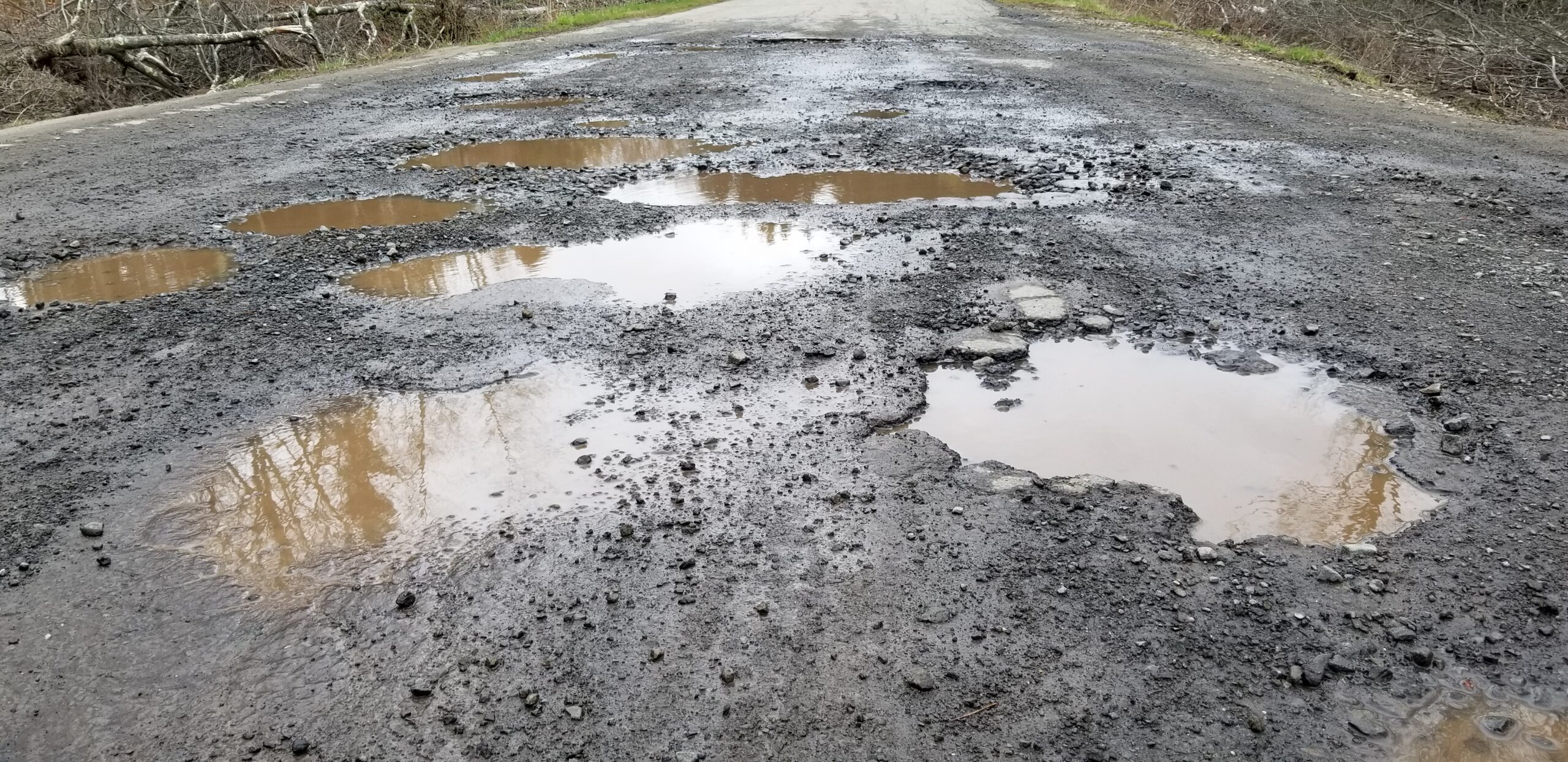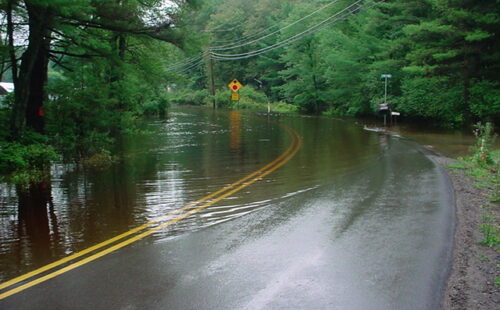News

Road Maintenance Warning Signs
Roads are an integral part of our lives, as most of us travel them daily to get wherever it is that we need to go. Unfortunately, not all roads are created equal, making the ride a little bumpier on some roads than others. You may be wondering why that is and what factors contribute to poor road conditions such as cracks, bumps, and potholes.
Why are there so many potholes?!

Storm water flooding a road in Pike County
Often, poor road conditions are the result of not properly addressing stormwater drainage. Roads can intercept subsurface flows, increase hillslope drainage volume and velocity through ditches and culverts, and create restrictions at stream crossings. If not properly managed, the stormwater can result in significant damage to the road base and surface as well as have environmental impacts by carrying road sediment into nearby surface waters. Some signs that a road is being negatively impacted by water include frequent rutting and potholing, unstable and eroded ditches, and the need to replace road surface material on dirt or gravel roads following heavy rainfall events due to erosion.
What do I do about it?
To minimize these negative impacts, there are several maintenance practices that can be implemented such as elevating the road base, installing additional culvert pipes to break up ditch drainage, reshaping and crowing the road surface so that water drains from the surface, and installing ditch turnouts. The Conservation District administers the Dirt, Gravel, and Low Volume Road Program in Pike County. This program provides funding to public road owning entities to address some of these sites with drainage issues, which result in pollution to nearby surface waters. Many of the environmentally sensitive maintenance practices implemented on these sites are the result of technical guidance and bulletins provided by Penn State Universities Center for Dirt and Gravel Road Studies. Although grant funding through this program is only available to public road owning entities, the maintenance practices can be used to address stormwater impacts, improve road quality, and reduce maintenance costs of any road.
Technical bulletins showing how to install these maintenance practices can be found on the Center’s website at www.dirtandgravel.psu.edu. Conservation District staff is also available to provide technical assistance to any Pike County residents responsible for road maintenance.
